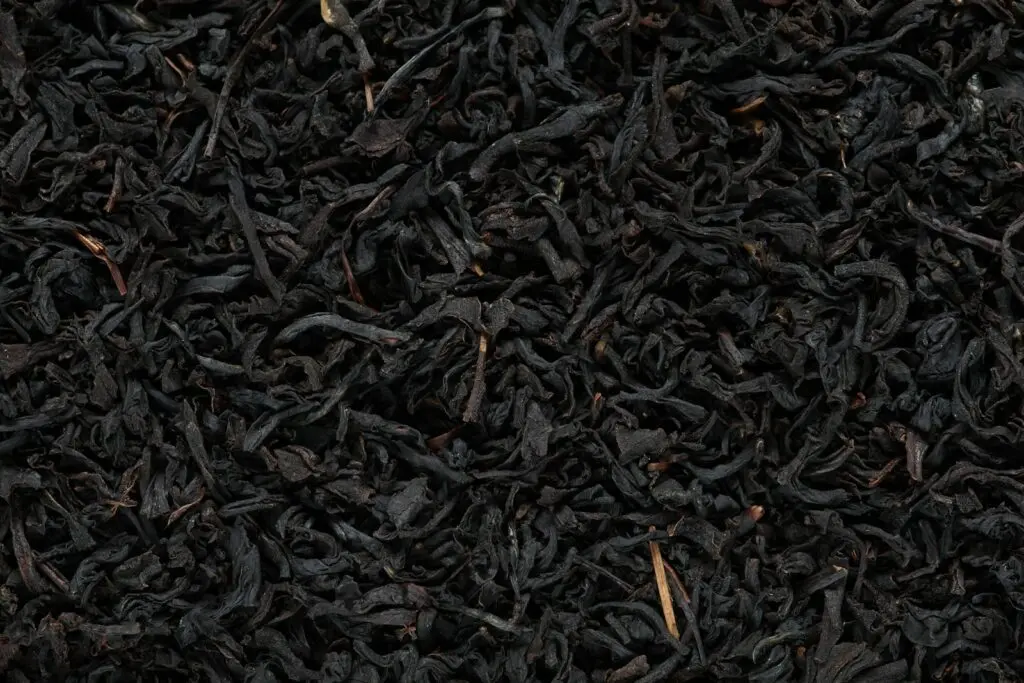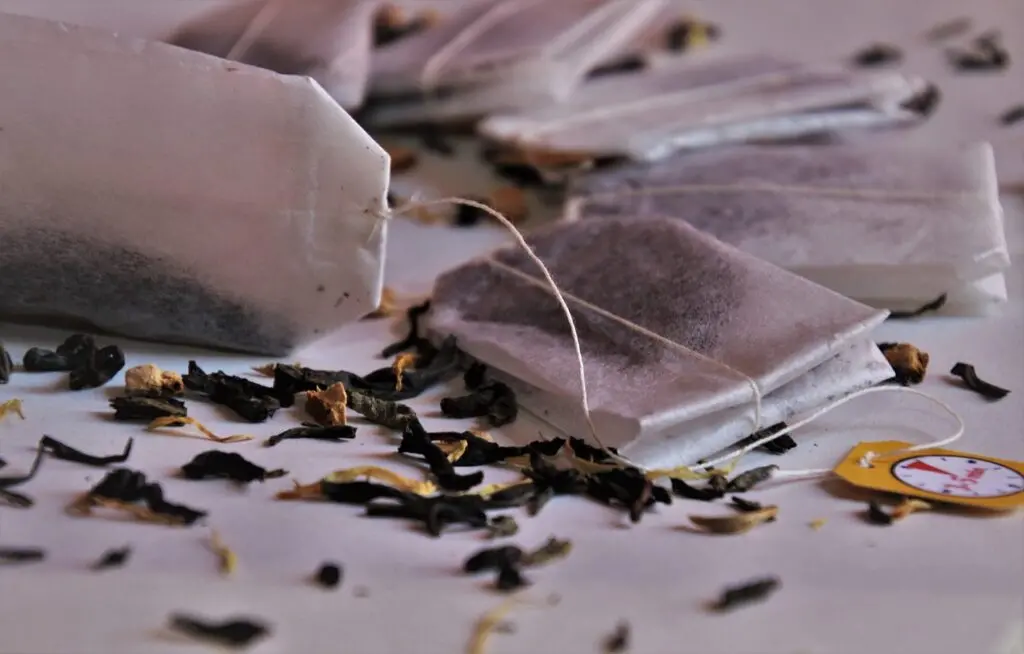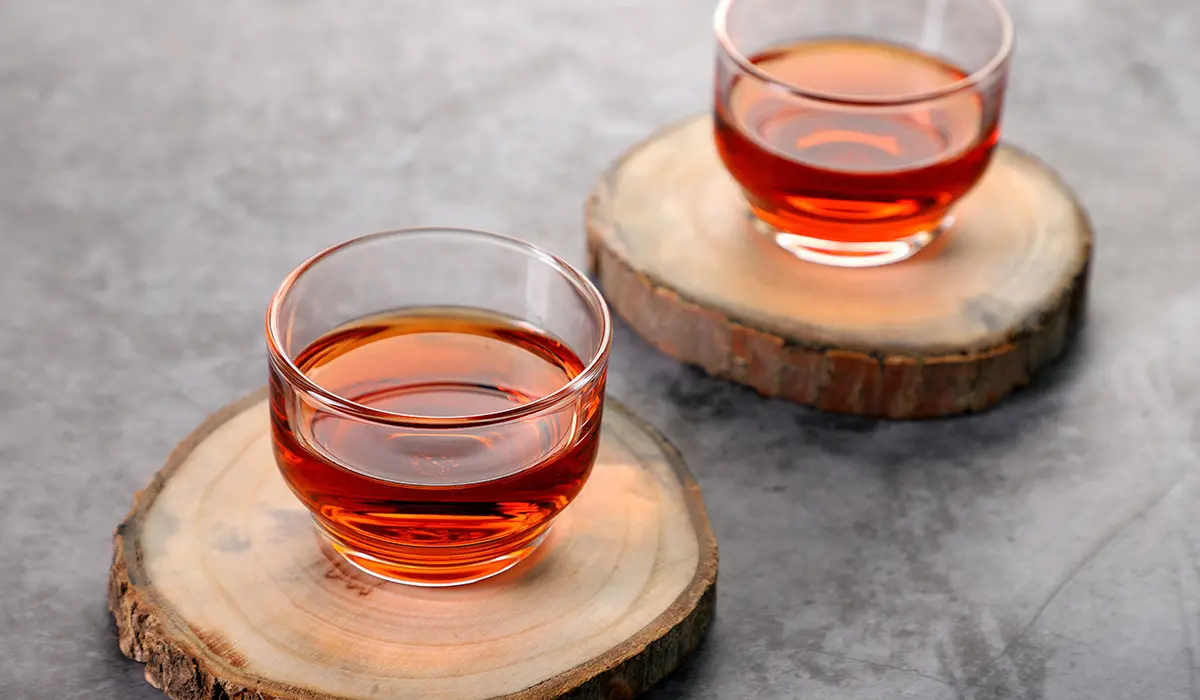Introduction
Black tea, a beloved beverage worldwide, boasts a deep and rich history that spans centuries and continents. Renowned for its robust flavour profile and energizing properties, it is often celebrated as a staple of daily routines, social gatherings, and even ceremonial occasions. This versatile tea, derived from the Camellia sinensis plant, is fully oxidized, which lends its characteristic dark colour and bold taste.
With a variety of styles and origins, black tea transcends cultural boundaries and preferences. From the misty mountains of Darjeeling in India to the serene landscapes of Fujian in China, each region imparts its unique stamp on the leaves, resulting in an assortment of flavours, aromas, and characteristics.
Whether enjoyed plain, with milk, or infused with spices and herbs, black tea is more than just a drink; it’s a story steeped in tradition, health benefits, and gastronomic delight. In this article, we will delve into the origins of black tea, explore its various types, and uncover the art of brewing the perfect cup. You may also buy an afternoon tea set for black tea here. Join us on this journey to discover the enchanting world of black tea!

The Origins of Black Tea
The story of black tea begins in ancient China, where tea cultivation and consumption first took root over 5,000 years ago. According to legend, Emperor Shen Nong discovered tea when leaves from a wild tea tree blew into his pot of boiling water. Though the earliest versions of tea were likely green or white, by the Tang Dynasty (618–907 AD), the process of oxidizing tea leaves had begun, laying the groundwork for what we now recognise as black tea.
Historically, black tea was primarily produced for domestic consumption in China. It wasn’t until the mid-17th century that black tea gained popularity in Europe. As trade routes expanded, particularly through the efforts of the British East India Company, black tea became a coveted commodity. The robust flavour appealed to European palates, leading to its swift rise in popularity. By the 18th century, black tea was the preferred variety in England, overshadowing its lighter counterparts.
As demand increased, cultivation expanded beyond China. The British sought to break the Chinese monopoly on tea production, which led to the establishment of tea plantations in countries like India and Sri Lanka (then known as Ceylon). The first successful tea plantation in India was set up in Assam in the early 19th century. These regions soon developed their unique types of black tea, such as Assam, Darjeeling, and Nilgiri, each distinctively shaped by local climate, altitude, and soil conditions.
Today, black tea is among the most popular teas in the world. Its global appeal has been fueled by the spread of British tea culture and the amusing tradition of afternoon tea, as well as the recent revival of interest in specialty teas and artisanal brewing techniques. The influence of black tea can be seen everywhere—from the bustling streets of London to the serene tea houses of Japan, showcasing its versatility and enduring legacy through the ages.
In summary, the origins of black tea reflect a rich tapestry of cultural exchanges and agricultural innovations, making it a complex and delightful beverage that connects diverse cultures across the globe.
Varieties of Black Tea
Black tea is a diverse category with a plethora of varieties, each offering unique flavours, aromas, and characteristics. Here are some of the most popular and revered types of black tea across the globe:
1. Assam
Originating from the Assam region of India, Assam tea is known for its bold, malty flavour and bright colour. The tea plants flourish in the humid subtropical climate and rich soil of the region, resulting in a robust brew that is particularly favoured for breakfast teas. Assam tea is often enjoyed with milk and sugar, enhancing its richness, and making it a popular choice in both homes and tea houses.
2. Darjeeling
Often termed the “Champagne of teas,” Darjeeling tea is cultivated in the foothills of the Himalayas in India. Its light, floral, and muscatel flavour profile sets it apart from other black teas. Darjeeling is produced in distinct flushes—first, second, and autumn—each yielding different flavour notes. From the delicate, fruity notes of the first flush to the spicy, rich characteristics of the second, this tea provides an exquisite taste journey.
3. Nilgiri
Hailing from the Nilgiri hills in southern India, Nilgiri tea is celebrated for its bright, fragrant aroma and smooth taste. This tea is less astringent compared to its Assam and Darjeeling counterparts, making it refreshing and easy to drink. Its floral essence and slightly fruity notes make it a versatile tea, suitable for enjoying plain or with a slice of lemon.
4. Ceylon
Ceylon black tea comes from Sri Lanka and is known for its brisk flavour and vibrant amber colour. Depending on the elevation of the tea gardens, Ceylon can have varying tasting notes — high-grown Ceylon teas often feature a light, citrusy flavour, while lower-elevation teas can be more robust and full-bodied. The versatility of Ceylon tea makes it an excellent base for iced tea and blends.
5. Keemun
Chinese Keemun black tea is often lauded for its rich, smoky flavour with hints of chocolate and fruit. Grown in the Qimen County of Anhui Province, this tea is a staple in many English breakfast blends and is prized for its delicate aroma and smooth finish. Keemun offers a complex flavour profile that entices tea drinkers looking for a different experience.
6. English Breakfast
A classic staple in British tea culture, English Breakfast is a blend of various black teas, primarily including Assam, Ceylon, and Kenyan teas. This hearty and robust brew is designed to be strong enough to complement a full English breakfast. Its full-bodied flavour often enjoyed with milk, makes it a popular morning choice in many households.
7. Lapsang Souchong
Lapsang Souchong is a unique variety of black tea from China that is famous for its smoky flavour. The leaves are dried over pinewood fires, imparting a distinct aroma and taste that appeals to adventurous tea drinkers. While not a conventional choice, its bold character makes it an interesting option for those looking to explore beyond traditional black tea.
In conclusion, the world of black tea is extraordinarily rich and varied. Each type offers a unique tasting experience influenced by its geographic origin, processing methods, and local production techniques. Whether you are a seasoned tea connoisseur or a casual drinker, exploring these varieties can uncover hidden gems and broaden your appreciation for this beloved beverage.

Health Benefits of Black Tea
Black tea is not only a delightful beverage but also a powerhouse of health benefits that can contribute positively to your overall well-being. Rich in antioxidants and polyphenols, black tea has gained recognition for its potential to enhance various aspects of health. Here are some notable benefits:
1. Heart Health
Numerous studies suggest that regular consumption of black tea may help reduce the risk of heart disease. The flavonoids found in black tea can improve heart health by lowering blood pressure, reducing cholesterol levels, and improving blood vessel function. These compounds may also help prevent the formation of blood clots, further protecting against cardiovascular issues.
2. Enhanced Mental Alertness
The moderate caffeine content in black tea, combined with the amino acid L-theanine, can boost cognitive function and enhance mental alertness. Consuming black tea can improve focus and concentration, making it an excellent choice for those needing a boost during work or study sessions. Moreover, some studies have indicated that regular tea drinkers may enjoy lower risks of cognitive decline as they age.
3. Digestive Health
Black tea has been shown to promote digestive health by supporting gut flora and aiding in digestion. The tannins present in black tea can help soothe an upset stomach and alleviate gastrointestinal discomfort. Additionally, it may help with conditions like diarrhea, providing a gentle remedy to balance the digestive system.
4. Antioxidant Properties
Black tea is loaded with antioxidants, which combat oxidative stress in the body. These antioxidants, primarily polyphenols, play a vital role in reducing inflammation and protecting cells from damage. This can potentially lower the risk of chronic diseases, such as cancer and diabetes, by neutralizing free radicals and boosting the body’s defence mechanisms.
5. Immune Support
The anti-inflammatory and antibacterial properties of black tea can bolster the immune system. Regular consumption may enhance the body’s ability to fend off infections and illnesses. The catechins present in black tea are believed to inhibit the growth of certain bacteria and viruses, contributing to overall immune health.
6. Weight Management
Incorporating black tea into a balanced diet may assist in weight management. Some studies suggest that black tea can help boost metabolism and promote fat oxidation, making it a smart choice for those looking to manage their weight more effectively. Its hydrating nature also helps curb cravings, which can aid in portion control.
In summary, black tea contributes numerous health benefits that go beyond just being a warming beverage. By including this aromatic drink in your daily routine, you can enjoy not only its rich flavours but also the potential for improved health and well-being.
The Art of Brewing Black Tea
Brewing the perfect cup of black tea is both an art and a science, allowing you to unlock its rich flavours and therapeutic benefits fully. From selecting the right variety to perfecting your steeping technique, every detail matters. Here’s a step-by-step guide to brewing an exceptional cup of black tea.
Selecting Quality Tea Leaves
The journey to a splendid cup of black tea begins with quality tea leaves. Look for whole-leaf or loose-leaf black tea for the best flavour — these varieties provide a more nuanced and aromatic experience compared to pre-packaged tea bags. Popular black tea types include Assam, Darjeeling, Ceylon, and Keemun, each offering unique flavour profiles and aromas.
Measuring the Right Amount
Getting the measurement right plays a critical role in your brewing process. A general rule of thumb is to use one teaspoon of loose tea leaves per 8-ounce cup of water. Adjust according to your taste preferences; for a bolder cup, consider adding an extra half teaspoon.
Choosing the Right Water
The quality of water significantly impacts the taste of black tea. Ideally, use filtered or spring water to avoid any chlorine or mineral tastes that may come from tap water. The temperature of the water is equally important—black tea thrives at higher temperatures. Bring the water to a full boil, around 200°F to 212°F (93°C to 100°C), but avoid boiling it for too long to preserve the water’s quality.
Steeping Time
The steeping time is crucial in extracting the optimal flavour without causing bitterness. For most black teas, a steeping time of 3 to 5 minutes is recommended. Start with 3 minutes and taste-test; if you prefer a stronger brew, add additional time in 30-second increments. Remember, over-steeping can lead to astringency, which could mask the tea’s natural sweetness.
Enhancing Your Brew
Black tea can be enjoyed plain, but there are countless ways to elevate your experience. Here are a few ideas:
- Milk and Sweeteners: Adding milk or cream can create a creamy texture, perfect for varieties like Assam or English Breakfast. If you prefer a hint of sweetness, consider using honey, sugar, or natural sweeteners.
- Spices: Explore the world of spiced tea by adding a dash of cinnamon, cardamom, or clove during the steeping process. This addition will produce a comforting chai-inspired beverage.
- Citrus Zest: A slice of lemon or a few drops of orange zest can brighten the flavours, making your tea refreshing and vibrant.
Final Touches
Once the tea has steeped to perfection, use a fine strainer to separate the leaves from the brew, and pour it into your favourite cup. The presentation can enhance the tea-drinking experience, so consider garnishing with a sprig of mint or a lemon wheel.
Enjoying the Moment
Finally, as you take a moment to savour your cup of black tea, let the aroma and warmth wrap around you. Tea drinking is not just about the beverage; it’s about creating a ritual that invites mindfulness and relaxation into your day.
By mastering the art of brewing black tea, you not only indulge in a delightful drink but also embrace a tradition that spans cultures and centuries. Each cup can be a unique experience, allowing you to explore the fascinating world of black tea while enjoying its numerous health benefits. Happy brewing!

Pairing Black Tea with Food
Black tea, with its robust flavour and wide range of aromatic profiles, can be a delightful companion to various dishes. The key to successful pairings lies in understanding the nuances of both the tea and the food. Here, we explore some fantastic pairings that can elevate your dining experience.
Savory Pairings
- Breakfast Classics: Striking a balance with hearty breakfast foods, black tea shines when paired with dishes like a classic English breakfast of eggs, bacon, and toast. The tea’s maltiness complements the savoury richness perfectly, making each bite more enjoyable.
- Cheese: Robust black teas such as Assam or Darjeeling harmonize beautifully with rich cheeses like aged cheddar or Gouda. The tea’s tannins can cut through the creaminess of the cheese, making for a well-rounded palate.
- Barbecue and Grilled Meats: The smoky and spiced notes in varieties like Lapsang Souchong can enhance barbecue dishes. Its complexity makes it an excellent pairing for grilled meats, complementing the charred flavours with depth and warmth.
- Asian Cuisine: Black tea is often used in various Asian dishes, making it a great pairing choice. Use it to accompany dim sum or spicy Szechuan dishes. The tea can help balance out the heat while complementing the intricate spices typically found in these cuisines.
Sweet Pairings
- Desserts: Black tea pairs beautifully with desserts, particularly chocolate-based treats. The bitterness of dark chocolate works well with the sweetness of teas like Keemun or Ceylon, enhancing both flavours without overshadowing them.
- Baked Goods: Scones, muffins, and pastries can create a delightful experience when served alongside black tea. For example, an Earl Grey with its bergamot undertones can elevate a citrus-flavoured muffin or a buttery scone, enhancing the overall taste.
- Fruits: Fresh fruits, especially berries or stone fruits, can be a refreshing pairing with black tea. The acidity and sweetness of the fruits contrast nicely with the tea’s astringency, leading to a harmonious balance. Consider serving a cup of Darjeeling with a fruit salad for a delightful afternoon treat.
Regional Inspirations
- British Afternoon Tea: Embrace the tradition of afternoon tea by pairing strong black tea, like English Breakfast or Assam, with delicate sandwiches, scones, and pastry treats. This classic combination offers a well-rounded experience, allowing each element to shine through.
- Spicy Indian Dishes: Black tea, particularly Masala Chai, stands up beautifully to spicy Indian cuisine. The rich spices in the tea echo the flavours of curries, making them an ideal duo.
Tips for Perfect Pairings
- Balance Flavors: Aim for pairings that create harmony between the tea and food. Consider the strength of the tea and how its flavours can enhance or contrast with the dish.
- Experiment: Don’t hesitate to try different combinations. Your palate might surprise you, and you may discover an unexpected favourite pairing!
- Presentation Matters: Serve your tea and food together in a visually appealing way. A well-presented pairing can elevate the entire dining experience.
In conclusion, whether enjoyed during a light breakfast, an indulgent afternoon tea, or a full dinner, black tea can elevate the flavours of the dishes you accompany it with. Explore these pairings to discover your favourites and enhance each moment with a touch of tea elegance.

Conclusion
Black tea, with its rich history and diverse varieties, remains a beloved staple beverage worldwide. From the robust brews of Assam to the fragrant notes of Earl Grey, black tea offers a spectrum of flavours and aromas that captivate tea enthusiasts and casual drinkers alike. Its versatility extends beyond the cup, allowing it to complement a wide array of dishes, enhancing meals with its bold character.
As we’ve explored, black tea not only makes an excellent solo beverage but also shines as a partner to foods ranging from savoury to sweet. Whether enjoyed in the context of a traditional afternoon tea or paired with spicy cuisine, the right selection of black tea can elevate any dining experience. As you embark on your tea journey, don’t hesitate to experiment with different brews and pairings, as this exploration can uncover surprising combinations and deepen your appreciation for this timeless drink.
In closing, black tea invites you to slow down, savour the moment, and appreciate the art of tea drinking. Each cup tells a story — of distant lands, rich cultures, and centuries of tradition. So, brew your favourite blend, gather your preferred accompaniments, and indulge in the enchanting world of black tea. Cheers to moments of warmth, flavour, and connection!



Leave a Reply
You must be logged in to post a comment.